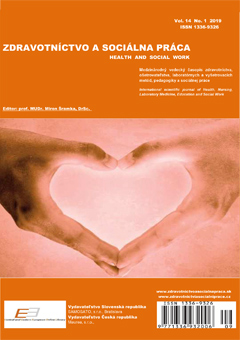DOSPĚLÝ PACIENT S CHŘIPKOU V PRIMÁRNÍ PÉČI
ADULT PATIENT WITH INFLUENZA IN PRIMARY CARE
Author(s): Dalibor Sedláček, Oto Masár, Robin ŠínSubject(s): Health and medicine and law
Published by: SAMOSATO, s. r. o., Bratislava, Slovensko - MAUREA, s. r. o., Plzeň, Česká republika
Keywords: influenza; primary care; oseltamivir; zanamivir; vaccination;
Summary/Abstract: Introduction: The influenza is infectious disease caused by A and B influenza viruses. These viruses belong to ortomyxoviruses family as a part of influenzaviruses genus. Every general practitioner meets influenza in primary care mostly from October to April of the next year. In this period we can talk about the influenza season. Core: Typical signs of influenza include sudden rise of fever with ague, fatigue and weakness. Pacient is also quite often suffering with headache and also with muscles and joint pain. A quick influenza test can be used as well as clinical examination and anamnesis in the general practitioner´s surgery. Oseltamivirus is used as a standard influenza treatment and chemoprofylaxis, which is administered in oral tablets. There can be severe complications of influenza including pneumonia, heart failure, myocarditis, pericarditis, encephalopathy or encephalitis. Vaccination is the most important influenza profylaxis method in these days. Conclusion: Influenza complications can be serious or can cause death in certain group of paitents. That´s why is necessary to think about influenza at every patient with new onset of respiratory signs, especially during the influenza season or during ongoing influenza epidemy.
Journal: International Journal of Health, New Technologies and Social Work
- Issue Year: 14/2019
- Issue No: 2
- Page Range: 82-88
- Page Count: 7
- Language: Czech

